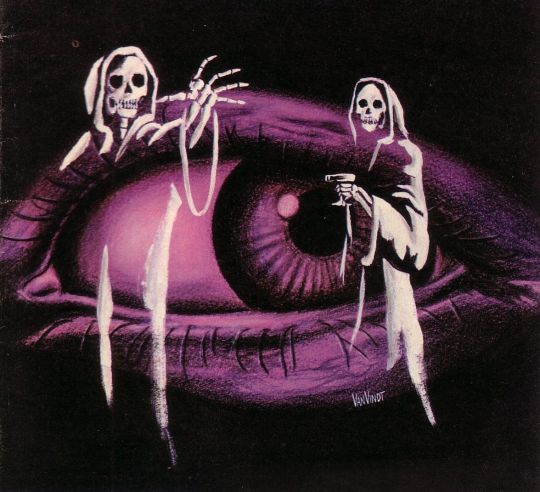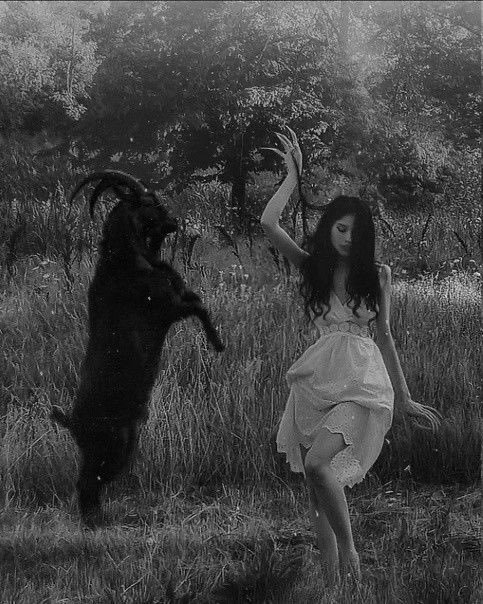Photo

Cover illustration for Dcera Zimy written by Vladimíra Šebová by Lenka Simeckova
This artist on Instagram // Tumblr (inactive)
1K notes
·
View notes
Photo
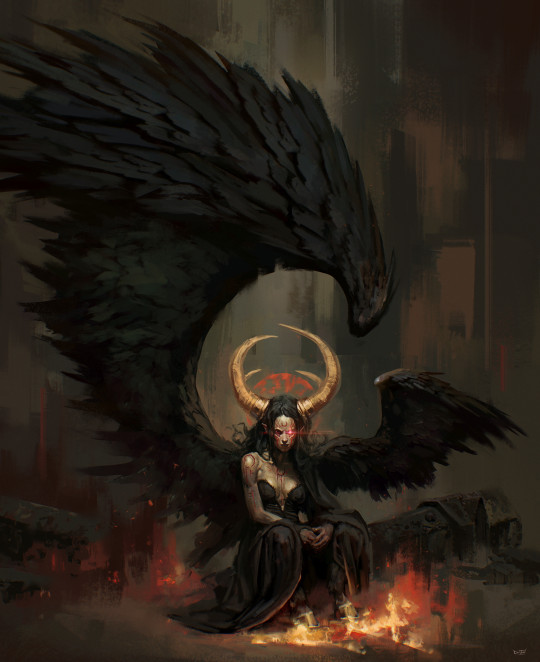
by Dariusz Kieliszek
This artist on Instagram
1K notes
·
View notes
Text
“One day I woke up and we no longer spoke the same language. I haven’t heard from you since.”
— Where did you go?, Hishaam Siddiqi
258K notes
·
View notes
Photo

“Young Woman and Death”, Hans Baldung, 1517.
13K notes
·
View notes
Photo

The Strickland Brooch
Anglo Saxon, 9th century
The British Museum
257 notes
·
View notes
Photo

Altar
Benin Empire, 18th-19th century
The National Museum of African Art
This object possibly supported an ivory tusk on an altar. The depiction of four female figures holding gongs suggests an association with an iyoba, or queen mother. Two figures strike bird gongs, which symbolize the infallibility of the oba.
30 notes
·
View notes
Photo
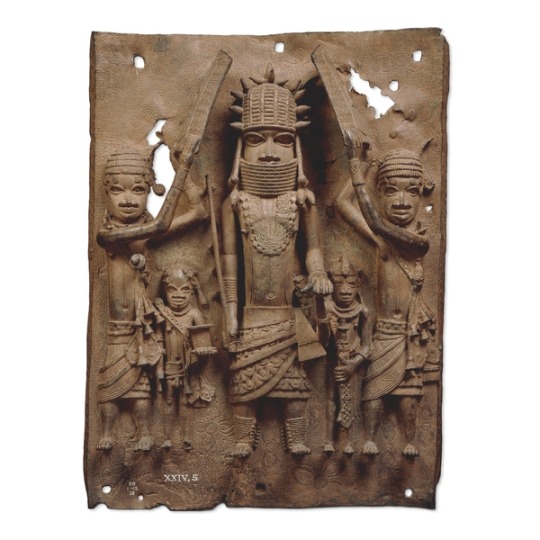
Plaque (Oba with Attendants)
Benin Empire, 16th century
The British Museum
“The plaques show aspects of Benin court life in the sixteenth century, shortly after Europe’s first contact with West Africa. Benin society was highly structured with a King (Oba) who was believed to be a direct descendant of Oranmiyan, the legendary founder of the dynasty. The Oba was also the head of government, collecting taxes, controlling trade and was the owner of all land in the country. He had two classes of chiefs, Palace and Town Chiefs who were responsible for the administration of the kingdom. The Palace Chiefs were from rich families and belonged to three associations: Iwebo, who looked after the Oba’s regalia, organized the guilds of craftsmen, and conducted negotiations with Europeans; Ibiwe, who were responsible for the Oba’s family, and Iweguae, who provided the domestic staff of officials and servants for the palace.
This plaque shows an Oba surrounded by his attendants, two of whom are depicted holding up their shields in a formal protective stance. Only the Oba was allowed to be shaded in this way within the city.”
54 notes
·
View notes
Photo

Bracelets
Benin Empire, 17th-19th century
The Metropolitan Museum of Art
“The oba and chiefs of Benin wear pairs of ornate bracelets at palace festivals. Long and cylindrical, these cufflike ornaments may be made of either ivory or brass and display imagery reflecting the exalted status of their bearers.
The spiral bands of incised, crosshatched half-ovals and dotted lines, set within raised, striated borders, terminate at either end in elongated crocodile heads. The artist has taken great care to evoke the appearance and character of these animals. Perpendicular lines along the snouts, as well as rows of bumps on the forehead, suggest the distinctive texture of crocodile skin, while the close-set eyes with contrasting pupils evoke the watchful gaze of this dangerous animal. The depictions of crocodiles, as with other forms of aquatic imagery, associates the ruler with Olokun, god of the sea. The ocean was conceived of as a major source of wealth and prosperity for the Benin kingdom, which benefited from overseas trade with Portugal and other European powers. A realm of unfathomable depths, it also served as a metaphor for the vast, hidden powers of the ruler.”
45 notes
·
View notes
Photo

Double Bell (Egogo)
Benin Empire, 16th century
The Brooklyn Museum
“This is one of the oldest surviving African ivory sculptures; only six of these ivory gongs are known. Double gongs were used by the oba (king) during the Emobo ceremony to drive away evil spirits. The carving here depicts theoba, supported by his military commander and his heir.”
45 notes
·
View notes
Photo

Armlet
Benin Empire, 15th-16th century
The British Museum
“This ivory armlet is worn by the Oba (king) of Benin in ceremonies in which he wears a coral costume, dances with a ceremonial sword and carries a gong. The armlet helps to prevent the coral beads from becoming entangled during the Oba’s dance.
Ivory formed an important part of the accessories worn at ritual ceremonies by the Oba. One of the series of annual rituals is the Bead Festival (Ugie Ivie) created by Oba Esigie, a great warrior-king of the sixteenth century, in remembrance of his military successes. The Bead Festival commemorates the struggle between Oba Esigie and his brother, Arhuaran of Udo, over the possession of the royal coral beads, used in a ceremony to announce the capital city of the kingdom. During the ceremony all the beads of the king, his wives and chiefs are placed upon the altar of Oba Ewuare, who first brought coral beads into Benin, and over them are poured the blood of a cow. The sacrificial blood imbues the beads with the mystical powers required for the remaining ceremonies.
The Oba is represented on the armlet with mudfish legs and his hands raised to the sky, thus linking him with the great god Olokun, ruler of the sea. The mudfish has symbolic significance among the Edo people as it can live on land and sea. Similarly, the Oba is invested with divine powers from the spiritual world above and the secular world below.”
90 notes
·
View notes
Photo

Royal Tusk
Benin Empire, 1750
The Minneapolis Institute of Art
“The ancestral altars of the Oba, or ruler of Benin, feature carved elephant tusks like this one, set into the top of a cast bronze portrait head. Because of its rarity and permanence, ivory is especially suitable for recording royal historical events, and many tusks recount episodes from Benin history or lives of the Obas. This tusk may have come from the altar of an Ezomo, the highest-ranking noble in Benin. The figures with fishtails instead of legs refer to the Oba himself (the Oba traces his descent from Olokun, lord of the sea, and thus controls the realms of both water and land). In the fourth row, on the inside of the curve of the tusk, is an elephant, probably referring to the Iyase n'Ode, a famous military leader who was able to transform himself into an elephant. He almost overthrew two Obas before being defeated by a loyal Ezomo. This episode from Benin folklore helps to secure the powerful role of the present Ezomo, who must act as protector to the royal house. Other images include the leopard, a royal symbol because of its power and intelligence; Adesua, an Ezomo’s young daughter, whose actions brought trouble to Benin; members of the Oba’s special guard who wear the bronze image of a royal leopard on their belts; and Portuguese soldiers (with long, straight hair and beards), allies of Benin since the fifteenth century. Additional figures represent nobles, attendants, and soldiers of the Oba.”
61 notes
·
View notes
Photo

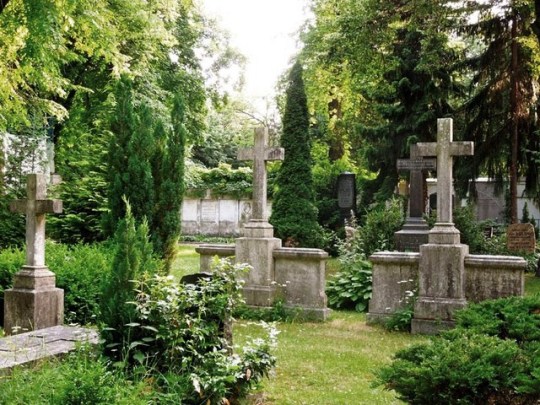
Dorotheenstädtischer Friedhof, Berlin - Deutschland
301 notes
·
View notes

